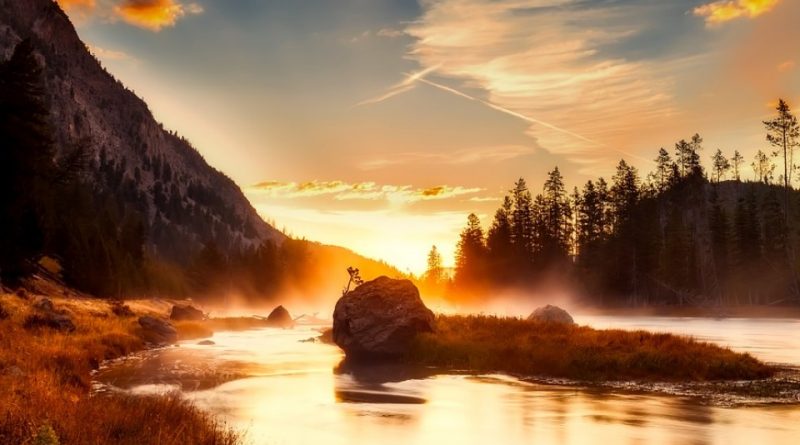Yellowstone National Park
Yellowstone National Park
Yellowstone National Park is a protected area in the United States, located in the extreme north-western sector of the State of Wyoming, including small portions north of the State of Montana and west of Idaho, occupying a large area of the Rocky Mountains. The name Yellowstone (literally yellow stone) is related to the very active volcanic phenomena and the yellow stone from the sulfur present in the area.
Yellowstone National Park is the center of the Greater Yellowstone Ecosystem, which is one of the largest intact ecosystems in the temperate zone of the Earth. In addition Yellowstone is not only the oldest national park in the world (established in 1872) and the largest protected area in the United States, in 1978 it was declared a World Heritage Site by UNESCO.
The surface of the Yellowstone National Park is 8,983 km², spread over a series of plateaus with an average altitude of 2,400 m asl Yellowstone is an area covered with grasslands and forests and crossed by the homonymous river that from north to south it crosses the whole area and then flows into the lake of the same name and then throws into a deep canyon that creates two magnificent waterfalls. The Yellowstone Park area is divided into five distinct and different regions:
– Mammoth Country, which is a spa area in the Mammoth Hot Springs area;
– Roosevelt Country, characterized by the presence of wapiti deer and bison;
– Geyser Country, where flows the Old Faithful which is the most famous sulphurous hot water geyser in the world;
– Canyon Country, with the Grand Canyon of Yellowstone (known as the Artists’ Canyon) and the Lower waterfall, twice as high as that of the Niagara;
– Lake Country, the area around Yellowstone Lake and with the highest concentration of wild animals.
In the geological, naturalistic and wildlife complexes of Yellowstone National Park there are over 300 geysers, 10,000 hot springs and numerous geothermal areas.
According to a study of the Department of Geology and Geophysics of the University of Utah under the Yellowstone Park, about 14 km deep there is an immense volcano of tens of Km.
Due to its complex geological nature, the Park area is subject to frequent and numerous earthquakes; on average, almost one per year, some of which exceeded magnitude 6 and one, that of 1959, of magnitude 7.5.
Yellowstone National Park is populated by about 60 species of mammals; among these we remember the wolf, the black bear (or baribal), the American bison, the elk, the mule deer, the sheep of the rocky mountains, the wapiti, the snow goat, the puma, the North American river otter, the antilocapra, the coyote, the famous white-headed sea eagle (which is the symbol of the United States of America) and other endangered species such as the Canadian lynx and the famous grizzly bear, which has become the symbol of Yellowstone.
In short, to summarize what the Yellowstone National Park is: Thermal springs at 200 ° C, geysers as tall as skyscrapers, colorful pools with embroidered banks, rivers in boiling, pools of emeralds and sapphires, hot fountains, terraced mountains, water eruptions, but also forests, fishing streams and rare animals: this is the spectacular natural landscape enclosed in the first natural park in history. There is something to be lost and enjoy the greatness of this nature.
Guido Bissanti

